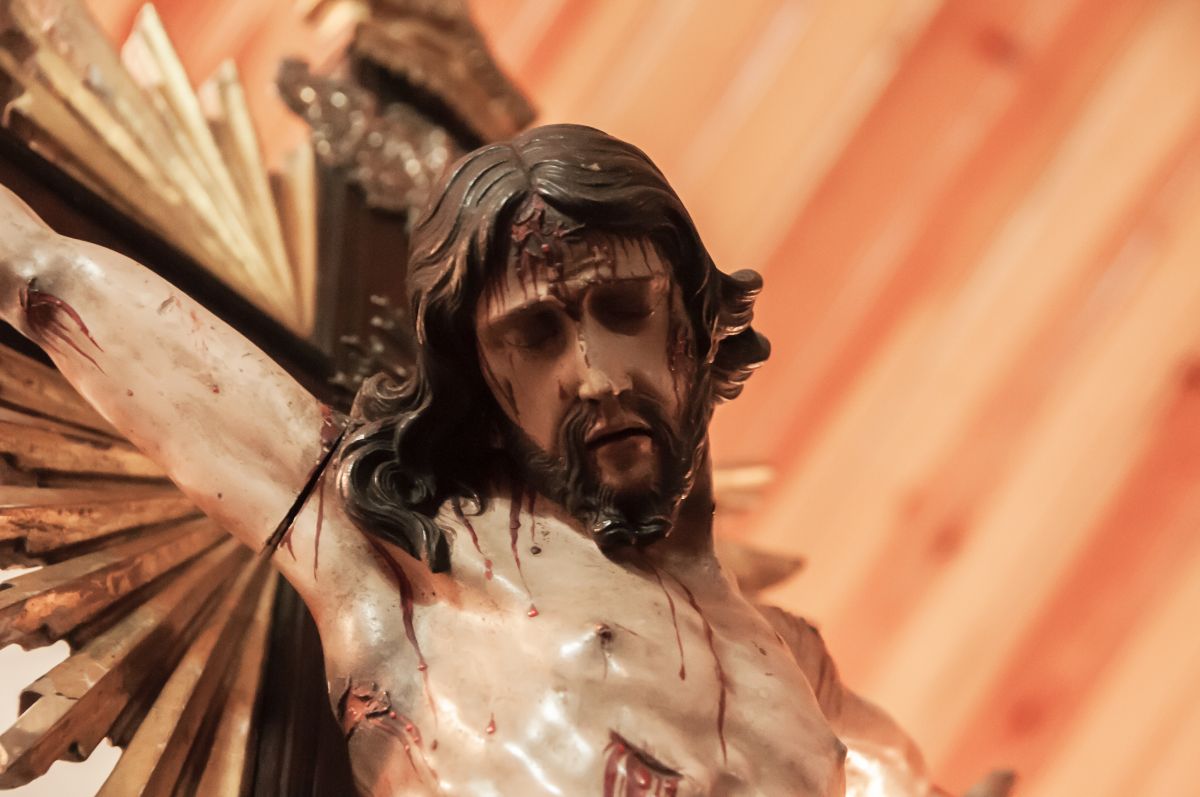In the Days of His Flesh

Does Jesus still have a fleshly body? While the Bible does not explicitly tell us what happened to Jesus’s body after the ascension (in AD 33), it does teach that Jesus no longer has a fleshly body…although he does have a body.
To begin with, Christians agree that Jesus did not have a fleshly body before coming to earth (before his first coming). As John says, the Word took on flesh (John 1:14). Moreover, this act of taking on flesh was considered “making himself of no reputation” (Phil. 2:7). This was a significant downgrade for Jesus because his flesh veiled his glory and divinity (although his miracles and wisdom certainly gave glimpses of it).
After finishing the work God had sent him to earth to do, Jesus prayed that the Father would glorify him with the glory he had since the world began (John 17:4–5). In other words, Jesus was ready to return to the glory–or form–he had before he took on flesh.
Consider, also, what the writer of Hebrews said about Jesus in approximately AD 60: “In the days of his flesh [past tense], when he offered up prayers and supplications, with vehement cries and tears…” (Heb. 5:7, italics mine). In the days of his flesh. This implies Jesus no longer has flesh.
John, too, made a very telling statement in the AD 60s: “Beloved, now we are children of God; and it has not yet been revealed what we shall be, but we know that when He is revealed, we shall be like Him, for we shall see Him as He is” (John 3:2, italics mine). Think about this passage logically. If Jesus was still in his fleshly body at this time (in the AD 60s), why would John say he did not know what Jesus was like? Didn’t John know exactly what Jesus was like in the days of his flesh (prior to the ascension)? Of course he did. John spent time with him, ate with him, and even saw him after the resurrection (John 21). Yet John did not know what Jesus was like after the ascension[1]…because Jesus was no longer in his flesh.
Another reason to conclude Jesus no longer has a fleshly body is that the new covenant atonement closely followed the old covenant atonement pattern. Yet under the old covenant atonement system, the sacrifice was burned up/consumed. Therefore, something similar should have happened to Jesus’s fleshly body. In fact, Jesus seems to suggest something like that in the following passage:
“Sacrifice and offering You [God] did not desire, but a body You have prepared for Me [to be sacrificed]. In burnt offerings and sacrifices for sin You had no pleasure. Then I said, ‘Behold, I have come…to do Your will, oh God'” (Heb. 10:8).
Although God did not take pleasure in sacrifices, that’s exactly what was needed one last time. Jesus was that perfect, final sacrifice. And, as the old covenant sacrifice was offered/consumed, so was the new (in some way). Note: I am not saying Jesus’s fleshly body was burned up–the Bible does not tell us what happened to it–I’m just saying is that it no longer exists, per the passages above.
Consider, also, how John described Jesus’s appearance in AD 65. Keep in mind, it was now thirty five years after the ascension:
“Then I [John] turned to see the voice that spoke with me. And having turned I saw seven golden lampstands, and in the midst of the seven lampstands One like the Son of Man, clothed with a garment down to the feet and girded about the chest with a golden band. His head and hair were white like wool, as white as snow, and His eyes like a flame of fire; His feet were like fine brass, as if refined in a furnace, and His voice as the sound of many waters; He had in His right hand seven stars, out of His mouth went a sharp two-edged sword, and His countenance was like the sun shining in its strength. And when I saw Him, I fell at His feet as dead. But He laid His right hand on me, saying to me, ‘Do not be afraid; I am the First and the Last. I am He who lives, and was dead, and behold, I am alive forevermore. Amen…'” (Rev. 1:12–18, italics mine).
Clothed in a garment. Hair like wool. White as snow. Flames of fire. Now compare this to Daniel’s description of God the Father:
“I watched till thrones were put in place, and the Ancient of Days was seated; His garment was white as snow, and the hair of His head was like pure wool. His throne was a fiery flame, its wheels a burning fire; a fiery stream issued and came forth from before Him. A thousand thousands ministered to Him; ten thousand times ten thousand stood before Him. The court was seated, and the books were opened” (Dan. 7:9–10, italics mine).
Same garment. Same hair like wool. Same white as snow. Same fiery flame. Clearly, John was equating Jesus with God! Yet God is Spirit (John 4:24). The Father does not have a fleshly body…and neither does Jesus anymore.
Although Jesus no longer has a fleshly body, he does have a body. It’s called the church: “I [Paul] now rejoice in my sufferings for you [disciples], and fill up in my flesh what is lacking in the afflictions of Christ, for the sake of His body, which is the church” (Col. 1:24, italics mine). Jesus’s body today is the church! Jesus is the head of the church body (Col. 1:18), and Christians are the many members: “For as the body is one and has many members, but all the members of that one body, being many, are one body, so also is Christ” (1 Cor. 12:12; see also vv. 13–20).
Possible objection: If Jesus no longer has a physical body, then he is no longer like us. Thus, he can no longer help us in times of struggle and temptation. “Therefore, in all things He [Jesus] had to be made like His brethren, that He might be a merciful and faithful High Priest in things pertaining to God, to make propitiation for the sins of the people. For in that He Himself has suffered, being tempted, He is able to aid those who are tempted” (Heb. 2:17–18).
Response: Just because Jesus no longer has a physical body does not mean he has forgotten what it was like to have a physical body and fight temptation. All Jesus had to do was experience it, and he did that when he took on flesh. What’s more, he made it through the experience flawlessly, without ever giving in to temptation. Therefore, he has not only met the requirement to be a propitiation for our sins (sinless perfection), but he also is able to help us in our times of struggle and temptation because he knows what it is like experientially.
Nevertheless, Jesus no longer has his fleshly body:
“In the days of His flesh [past tense] when He had offered up prayers and supplications, with vehement cries and tears to Him who was able to save Him from death, and was heard because of His godly fear, though He was a Son, yet He learned obedience by the things which He suffered. And having been perfected [presently, without his flesh] He became the author of eternal salvation to all who obey Him” (Heb. 5:7–9, italics mine).
For more about this issue–and other related issues–see my book The End Is Here: How the New Testament’s Prophecies Were Fulfilled.
Alex Polyak, The Bible Fulfilled 2/29/24
[1] Jesus ascended to heaven forty days after his resurrection.
